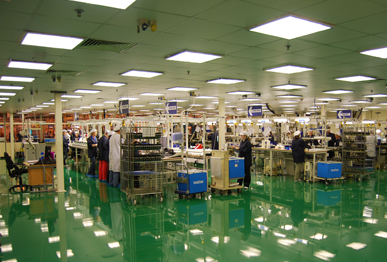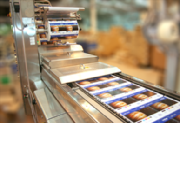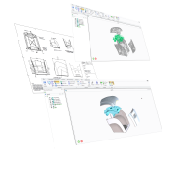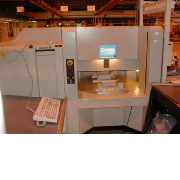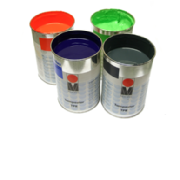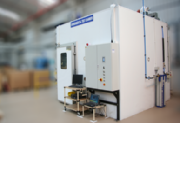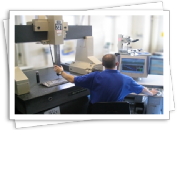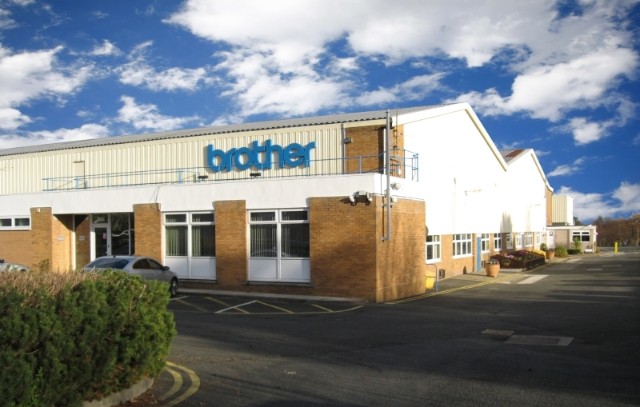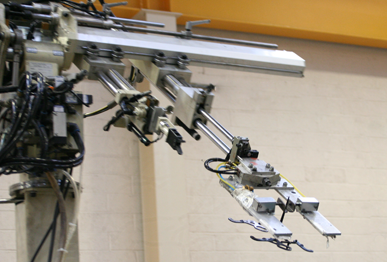Brother Moulding Division
The Moulding division of Brother Industries (UK) Ltd, (formerly known as GKK Plastics), was formed in 1990 delivering a precision injection moulding and assembly service to a blue chip client base. We are part of the global Brother Group consisting of over 30,000 employees worldwide, with access to the Brother Network and knowledge centres.
Based on a 24,000 sq. metre site in Wrexham, North Wales with good transport links to all areas of the UK. We supply Plastic Mouldings to a diverse range of markets including Electronics, Medical, Agricultural and Construction industries and can provide a total manufacturing service from concept design to finished product.
As specialists in the moulding of technical components, we have extensive assembly experience in both high and low volume manufacturing. Our highly efficient operation and continuous improvement philosophy ensure we remain extremely competitive and can offer the very best value to our customers.
At Brother we will always strive to offer an exceptional service and to meet and exceed our customer’s expectations.
Filter products and services
-
Injection moulding HDPE Stoke-on-Trent
Polyethylene is a member of the polyolefin family that also includes polypropylene. This group of materials is the most widely used accounting for over half of worldwide thermoplastic consumption Compared to LDPE, HDPE has greater rigidity, hardness, heat distortion temperature (HDT) and chemical resistance but a lower impact strength. It has better low temperature properties than polypropylene homopolymer but is not as flexible or as hard. As with polypropylene, the material is resistant to boiling water.
Please contact us for more information.Request a Quote Supplied by Brother Moulding Division -
Injection moulding HDPE Whitchurch
Polyethylene is a member of the polyolefin family that also includes polypropylene. This group of materials is the most widely used accounting for over half of worldwide thermoplastic consumption Compared to LDPE, HDPE has greater rigidity, hardness, heat distortion temperature (HDT) and chemical resistance but a lower impact strength. It has better low temperature properties than polypropylene homopolymer but is not as flexible or as hard. As with polypropylene, the material is resistant to boiling water.
Please contact us for more information.Request a Quote Supplied by Brother Moulding Division -
Injection moulding HDPE Wrexham
Polyethylene is a member of the polyolefin family that also includes polypropylene. This group of materials is the most widely used accounting for over half of worldwide thermoplastic consumption Compared to LDPE, HDPE has greater rigidity, hardness, heat distortion temperature (HDT) and chemical resistance but a lower impact strength. It has better low temperature properties than polypropylene homopolymer but is not as flexible or as hard. As with polypropylene, the material is resistant to boiling water.
Please contact us for more information.Request a Quote Supplied by Brother Moulding Division -
Injection moulding LDPE
To make LDPE resins, Brother Moulding uses high pressure, high temperature tubular and autoclave polymerization reactors (Figures 7 and 8). Ethylene is pumped into the reactors and combined with a catalyst or initiator to make LDPE. The LDPE melt formed flows to a separator where unused gas is removed, recovered, and recycled back into the process. The LDPE is then fed to an extruder for pelletization. Additives, if required for specific applications, are incorporated at this point.
Please feel free to contact us for more information.Request a Quote Supplied by Brother Moulding Division -
Injection moulding LDPE Chester
To make LDPE resins, Brother Moulding uses high pressure, high temperature tubular and autoclave polymerization reactors (Figures 7 and 8). Ethylene is pumped into the reactors and combined with a catalyst or initiator to make LDPE. The LDPE melt formed flows to a separator where unused gas is removed, recovered, and recycled back into the process. The LDPE is then fed to an extruder for pelletization. Additives, if required for specific applications, are incorporated at this point.
Please feel free to contact us for more information.Request a Quote Supplied by Brother Moulding Division -
Injection moulding LDPE Crewe
To make LDPE resins, Brother Moulding uses high pressure, high temperature tubular and autoclave polymerization reactors (Figures 7 and 8). Ethylene is pumped into the reactors and combined with a catalyst or initiator to make LDPE. The LDPE melt formed flows to a separator where unused gas is removed, recovered, and recycled back into the process. The LDPE is then fed to an extruder for pelletization. Additives, if required for specific applications, are incorporated at this point.
Please feel free to contact us for more information.Request a Quote Supplied by Brother Moulding Division -
Injection moulding LDPE Northwich
To make LDPE resins, Brother Moulding uses high pressure, high temperature tubular and autoclave polymerization reactors (Figures 7 and 8). Ethylene is pumped into the reactors and combined with a catalyst or initiator to make LDPE. The LDPE melt formed flows to a separator where unused gas is removed, recovered, and recycled back into the process. The LDPE is then fed to an extruder for pelletization. Additives, if required for specific applications, are incorporated at this point.
Please feel free to contact us for more information.Request a Quote Supplied by Brother Moulding Division -
Injection moulding LDPE Shewsbury
To make LDPE resins, Brother Moulding uses high pressure, high temperature tubular and autoclave polymerization reactors (Figures 7 and 8). Ethylene is pumped into the reactors and combined with a catalyst or initiator to make LDPE. The LDPE melt formed flows to a separator where unused gas is removed, recovered, and recycled back into the process. The LDPE is then fed to an extruder for pelletization. Additives, if required for specific applications, are incorporated at this point.
Please feel free to contact us for more information.Request a Quote Supplied by Brother Moulding Division -
Injection moulding LDPE Stoke-on-Trent
To make LDPE resins, Brother Moulding uses high pressure, high temperature tubular and autoclave polymerization reactors (Figures 7 and 8). Ethylene is pumped into the reactors and combined with a catalyst or initiator to make LDPE. The LDPE melt formed flows to a separator where unused gas is removed, recovered, and recycled back into the process. The LDPE is then fed to an extruder for pelletization. Additives, if required for specific applications, are incorporated at this point.
Please feel free to contact us for more information.Request a Quote Supplied by Brother Moulding Division -
Injection moulding LDPE Whitchurch
To make LDPE resins, Brother Moulding uses high pressure, high temperature tubular and autoclave polymerization reactors (Figures 7 and 8). Ethylene is pumped into the reactors and combined with a catalyst or initiator to make LDPE. The LDPE melt formed flows to a separator where unused gas is removed, recovered, and recycled back into the process. The LDPE is then fed to an extruder for pelletization. Additives, if required for specific applications, are incorporated at this point.
Please feel free to contact us for more information.Request a Quote Supplied by Brother Moulding Division


